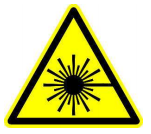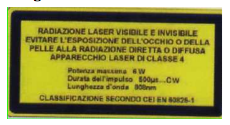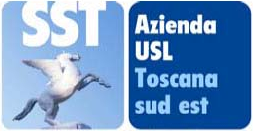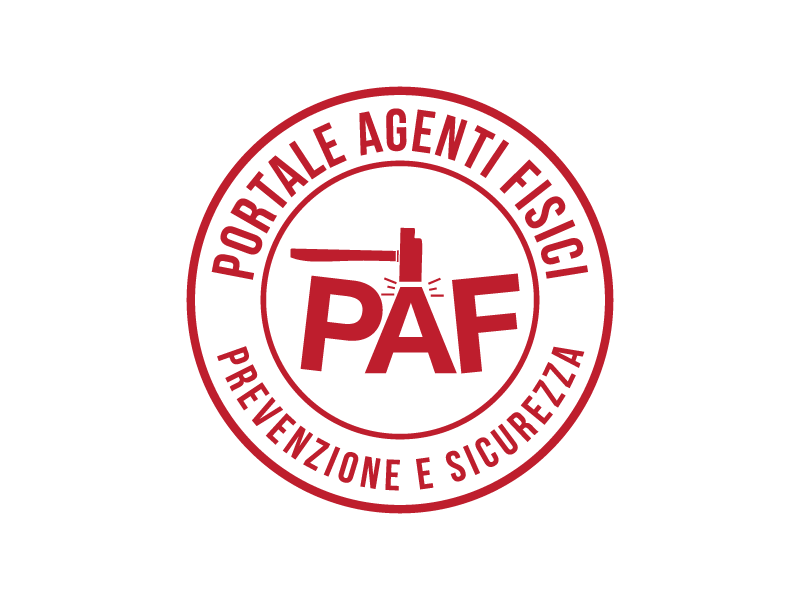PREVENTION AND PROTECTION -- Artificial Optical Radiations
Technical and organisational measures
Delimitation of controlled areas
Workers belonging to particularly sensitive risk groups
Technical and organizational measures to be adopted after the assessment
The aim of the protection measures is to avoid or to reduce all direct or indirect risks to the health and safety arising from exposure to hazardous optical radiation and any associated risk.
Directive 2006/25/EC of the European Parliament and of the Council requires the adoption of specific preventive measures only when the assessment highlights that ELV (Exposure Limit Values) can be exceeded or health surveillance highlights relevant disorders to worker's health related to AOR.
a) Non-coherent sources
Beyond the adoption of protection measures set in the instruction manuals of the CE marked work equipment (machines), once it has been verified that the source or the source-activity is essential or irreplaceable, technical or procedural solutions can be adopted in order to limit or prevent the exposure, such as:
1) the enclosure of the source within further suitable shielded housings that should be totally blind or have a known attenuation, with regard to the wavelengths of interest; e.g. UV radiation can be shielded by glass windows or plastic materials that are clear to visible light;
2) the adoption of blinded or adiactinic shields close to sources (e.g.: normal shields that surround the welding stations, as set for in EN ISO 25980:2014);
3) the physical separation of places in which potentially harmful AOR are generated from near workstations ;
4) the use of automatic systems (interlocks) that inactivate potentially harmful AOR sources (e.g.: UV germicidal lamps) placed on the accesses to the rooms where these are used;
5) the definition of “controlled area”, labelled by suitable safety signs, whose access is restricted to people informed and trained on risks arising from exposure to radiation emitted by the sources that it contains and on appropriate protection measures. This solution is particularly useful for avoiding undue exposures, i.e. exposure of workers which are not directly involved in operations with potentially harmful AOR sources, or exposure of particularly sensitive subjects.
b) Laser appliances
The EN 60825-1 standard identifies the main protection measures for the installation and use of lasers and envisages, depending on the class of the laser apparatus, specific prevention measures, which must be assessed according to the specific context, such as:
- to adequately shield the beam at the end of its useful path;
- to treat or protect any reflecting surfaces lying on the beam path and for the specific wavelengths in order to avoid its reflection or diffusion;
- to link the circuits of the room or of the door to a remote block connector;
- to enable the instrument by the mean of a hardware or software key control;
- insertion of a beam attenuator;
- to install safety signs and warning signs on the accesses to the areas (LCA and NOHA, see Paragraph 5.25) or to protection enclosures;
- provision of procedures for the safe access to the risk areas (e.g.: the introduction of reflecting objects by the personnel staff should be avoided).
Delimitation of controlled areas
In accordance with Council Directive 92/58/EEC of 24 June 1992 on the minimum requirements for the provision of safety and/or health signs at work, it is necessary to delimit the areas where workers or individuals from the general public could be exposed to such risk.
The areas in question shall be identified by appropriate signs and the access to them limited where this is technically possible and where there is a risk that the exposure limit values could be exceeded.
In the case of incoherent optical radiations, as a specific warning sign is missing, it is indicated to use the warning sign intended for marking AOR emitting machinery, in accordance with EN 12198 standard, as reported in Figure 1.
If inside the area it is necessary to wear PPEs, such as e.g. eyewear, the appropriate mandatory sign (such as that indicated in Figure 2) must be exposed at the entrance.
|
Figura 1 |
Figura 2 |
|
|
|
| Warning sign for optical radiation | Mandatory sign for eye protection |
In case of laser radiation, the appropriate signs for identifying the Laser Controlled Area (LCA) can be found in standard IEC EN 60825-1:2009 that establishes that warning signs indicating the presence of a laser and the related class (see Figure 25.3 and 25.4) must be displayed on the access to areas containing Class 3B e Class 4 lasers.
If inside the LCA it is necessary to wear PPEs, such as e.g. eyewear, the appropriate mandatory sign - which in the current example is still that indicated in Figure 25.2- must be displayed at the entrance.
|
Figura 3 |
Figura 4 |
|
|
|
| Laser pictogram | Possible additional plate for lasers |
In case of an area where there are one or more laser sources, the area in question, according to standard IEC EN 60825-1, is subdivided in “Zones” as indicated below:
· Laser Controlled Area (LCA) = an area where the occupancy and activity of those within is subject to control and supervision for the purpose of protection from radiation hazards;
· Nominal ocular hazard area (NOHA) = the area within which the beam irradiance or radiant exposure exceeds the appropriate corneal maximum permissible exposure (MPE), including the possibility of accidental misdirection of the laser beam. If the NOHA includes the possibility of viewing through optical aids, this is termed the "extended NOHA"
NOHA is included within LCA.
If the area is delimited by physical walls of any kind that result in a barrier for the laser radiation that could be accidentally incident, the LCA can overlap with the surface delimited by such walls.
In case of an area that is not delimited by physical walls, a controlled access inside the LCA and NOHA must be implemented.
Personal Protective Equipments (PPEs)
For the purposes of protecting workers from risks to eyes and face, once these risks have been identified and assessed and all the measures that could be concretely implemented in order to remove or reduce them have been adopted, the employer is obliged to adopt also the most effective eyes and face protection equipment to counter the existing risks.
For eyes and face protection one must use goggles (with double or single ocular), masks (of the box or cup type) and face shields (for welding or other uses).
The risks to eyes and face that can be found on a work environment can be classified in mechanical or electrical risks, chemical or biological risks and risks arising from radiation; the reference technical standards are reported in the Table below.
|
STANDARD |
TITLE |
|
EN 166: 2004 |
Personal eye-protection - Specifications |
|
EN 167: 2003 |
Personal eye-protection - Optical test methods |
|
EN 168: 2003 |
Personal eye-protection - Non-optical test methods |
|
EN 169: 2003 |
Personal eye-protection - Filters for welding and related techniques - Transmittance requirements and recommended use |
|
EN 170: 2003 |
Personal eye-protection - Ultraviolet filters - Transmittance requirements and recommended use |
|
EN 171: 2003 |
Personal eye-protection - Infrared filters - Transmittance requirements and recommended use |
|
EN 172: 2003 |
Personal eye protection - Sunglare filters for industrial use |
|
EN 175: 1999
|
Personal protection. Equipment for eye and face protection during welding and allied processes |
|
EN 207: 2004 |
Personal eye-protection equipment. Filters and eye-protectors against laser radiation (laser eye-protectors) |
|
EN 208: 2004 |
Personal eye-protection. Eye-protectors for adjustment work on lasers and laser systems (laser adjustment eye-protectors) |
|
EN 379: 2004 |
Personal eye-protection – Automatic welding filters |
a) Incoherent optical radiations
PPEs intended to prevent the acute and chronic effects of radiations on the eye must be able to absorb the most part of the irradiated energy in the harmful wavelengths. They must not excessively alter the transmission of the non harmful part of the visible spectrum, the perception of contrasts and the colour distinction where the predicable conditions of use require it. Furthermore, the lens must not deteriorate or loose their properties due to the effect of irradiation emitted under normal conditions of use.
All the optical radiation protective equipment for eyes and face belongs to at least the category II according to European Directive 89/686 and, therefore, entails the obligation of a specific training for use.
Eye and face protection devices, beyond the CE marking, must imperatively have the specific marking both for the ocular and for the frames, both of which are represented by an horizontal sequence of letters and numbers that indicate the protection capacities and the features of both parts of the device. The information note enclosed to the PPE contains the explanations that allow to interpreter the meaning of the marking and is particularly useful because the marking includes several alphanumerical codes established by the specific technical standards.
The ocular has an alphanumerical code before the manufacturer identification mark which, if the device operates in reducing the exposure to incoherent optical radiation, has in the first position a scale number identifying the kind of protection from light radiations.. The scale number is a combination of a code number (which identifies the spectral region for which the filters are intended) and a graduation number (which represents the capacity of the filter to retain the dangerous incident radiation), separated by a dash. If there is just one number, the device is a protector for welding (the related filters do not have, indeed, a specific code number) and the single number will identify directly the graduation.
Finally, it is necessary to remind that the overall worker protection often includews PPEs that do not involve the protection of only eye and face. E.g., in the working activities that entail operator exposure to radiation emitted by electrical arches, plasma torches, etc (UV, visible and infrared radiation) the protection is implemented by prescribing to the operator to use, beyond the masks equipped with appropriated filters or the helmets equipped with electronic liquid crystal filters, the welding gloves and a heat resistant apparel (e.g. apron). Incidentally, it is also necessary that in the environment where the operator works with such protections the microclimate is adjusted accordingly.
b) Laser radiations
The eye protectors for specific laser radiations must be used in all the dangerous areas where class 3B or 4 laser are operating.
The European standard EN 207 describes the requirements to which the laser filters must comply and lists the possible protection levels, indicated by a graduation number expressed by the L symbol, followed by a number going from 1 to 10.
For each protection level the maximal spectral factor for transmittance within a specified wavelength, as well as the power and/or energy densities used for the trial tests, is indicated; these tests are performed for the different types of lasers (continuous wave, pulsed mode, giant pulsed mode and modelocked) each labelled with an identification letter (respectively D, I, R and M).
The EN 207 technical standard provides the formulas that allow to calculate the protection level necessary for a given laser and a reference table (reported in Annex 6 - Table A6-G) that helps to perform the adequate calculations; as an alternative it is advised to refer to the manufacturer of anti-laser eyewear and to provide them all the features of the laser from which one must be protected.
Beyond the protection level, for the purposes of the choice of the adequate device, it is necessary to take into account also:
· the light transmission, in order to have the best defined possible view;
· the colour recognition;
· the field of view must be the widest possible.
Moreover, the eye protector must adhere to the face, allowing, in the same time an adequate ventilation to prevent the steaming up. The frames and the lateral shields must provide a protection equivalent to that guaranteed by the lenses.
It is important to highlight that, even when wearing an eye protector, one shall not stare at the beam; in the trial tests the eyewear shall withstand a continuous wave laser for 10 seconds, or 100 pulses for a pulsed laser.
Concerning the operations of pointing and aligning of the laser beam, some specific protections are available, which are defined by another technical standard, EN 208.
These goggles protect during laser adjustment, with an emission in the spectral visible field from 400 to 700 nm, in which the beam is visible. In this case, the filters certified according to the standard quoted below shall not be used to directly stare at the beam, but only for protection from an accidental impact.
The same standard, as always, provides a protection scale: in the mark appended to the eyewear the protection level is labelled by the R letter, followed by a graduation number form 1 to 5.
Granted that in each case a prompt control by the Competent Physician must be expected when an exposure above the limit values has been observed, considering the fact that health surveillance, as considered by the Directive, is performed with the aim of preventing all the harmful effects deriving from the exposure, it appears logical to activate the periodic preventive health examinations for those workers that, based on the risk assessment, must wear eye or skin PPEs as, otherwise, could be exposed to levels that exceed the limit value set by law (although all the necessary technical preventive measures, collective protection equipment as well as measures, methods or procedures of work reorganisation have been adopted). Specifically referring to the UV radiation and blue light, targeted interventions of health surveillance for long term harms prevention can be implemented when the exposures, even if below the limit values, can last long in time (months, years) (see Annex 3).
Normally, the health surveillance must be performed annually.
Concerning particularly sensitive subjects, that could be exposed to a significant risk also at values below limits set by law, the Competent Physician will define the periodicity of the health controls and the specific protective measures to implement in accordance to the type and the extent of the exposure and the individual susceptibility conditions emerged from the health check.
Workers belonging to particularly sensitive risk groups
A non exhaustive list of particularly sensitive groups (referred to the whole optical spectrum where not differently specified) is provided below:
-
Pregnant women: in the absence of any reliable information deriving from scientific literature, the Competent Physician will be in charge of evaluating if it is necessary to adopt any specific protection measure. A particular attention must be given to the possible synergistic action of microclimatic conditions and IR: e.g. in case of workers operating near ovens;
-
m
-
Minors: in the absence of any reliable information deriving from scientific literature, the Competent Physician will be in charge of evaluating if it is necessary to adopt any specific protection measure. We remind, however, that law forbids to assign teenagers - with the exception of cases waived by the Competent Authority - to work practices, to processes and to works, such as work activities in the foundries, the production of iron and non iron metals and their alloys and welding and cutting of metals with electrical arches or blowtorch oxy-acetylene flame, that can entail remarkable exposure to AOR;
-
Albinos and individuals with skin phototype 1 for exposure to UV radiations;
-
Collagen disease carriers (Scleroderma and Lupus Eritematosus in its different forms, dermatomyositis , polyarteritis nodosa, Wegener syndrome, antiphospholipid syndrome) for exposure to UV radiations;
-
The subjects that are under chronic or cyclic treatment with photosensitising medication (such as, e.g.: antibiotics such as tetracyclines and fluoroquinolones; non steroid anti inflammatory drugs such as ibuprofen and naproxen; diuretic such as frusemide; hypoglycemic drugc such as sulfonylurea; phsoralen; retinoic acid; aminolevulinic aced; neuroleptics such as phenothiazines; antiarrhythmics such as amiodarone); see Table 2;
-
The subjects that are affected by iris and pupil disorders (iridocolobomas, aniridias; mydriasis, Adie pupil);
-
The drusen (colloidal bodies) carriers, for exposure to blue light;
-
Workers having skin malignant or pre-malignant lesions, for exposure to UV radiations;
-
Workers that are affected by photoinduced or photoaggravated skin pathologies, for exposure to UV and IR radiation;
-
Workers with xeroderma pigmentosum, for exposure to UV radiations;
-
Epileptic subjects for exposure to visible light of intermittent type, i.e. between 15 and 25 flashes per second.
For health surveillance purposes workers having undergone to a IOL (Intra Ocular Lens; “artificial lens”) graft must be cautionary considered particularly sensitive to the retinal damage, in particular if they are exposed to radiation between 300 nm and 550 nm.
Further information can be found in the specialized medical literature.
Table 2: Photosensitizing agents (from ICNIRP, 2004).
|
Agents |
Incidence |
Type of reaction |
Efficient wavelength range |
|
|
Photosensitizers after local administration |
||||
|
Sulphonamides (sun screens, optical brighteners) |
n.a.* |
phototoxicity and photoallergy |
290 - 320 nm |
|
|
Disinfectants (salycilanilide compounds in soaps and deodorants) |
n.a. |
phototoxicity and photoallergy |
290 - 400 nm |
|
|
Phenotiazines (creams, dyes and insecticides) |
n.a. |
phototoxicity and photoallergy |
320 nm - Visible |
|
|
Dyes |
n.a. |
phototoxicity hyperpigmentation |
Visible |
|
|
Coal tar and derivatives (phenolic compounds) |
n.a. |
phototoxicity |
340 - 430 nm |
|
|
Essential oils (perfumes and eau de Cologne) |
n.a. |
phototoxicity hyperpigmentation |
290 - 380 nm |
|
|
Furocoumarin compounds (psoralens) |
n.a. |
phototoxicity hyperpigmentation |
290 - 400 nm |
|
|
Cadmium sulphide (tatoos) |
n.a. |
phototoxicity |
380 - 445 nm |
|
|
Photosensitizers after oral or parenteral administration |
||||
|
Amiodarone |
High |
phototoxicity |
300 - 400 nm |
|
|
Thiazide based diuretics |
Medium |
photo-allergenicity |
300 - 400 nm |
|
|
Chlorpromazine and associated phenotiazines |
Medium |
phototoxicity and photoallergy |
320 - 400 nm |
|
|
Nalidixic acid |
High |
phototoxicity |
320 - 360 nm |
|
|
Non steroid anti inflammatory drugs |
Low |
phototoxicity and photoallergy |
310 - 340 nm |
|
|
Protryptiline |
High |
phototoxicity |
290 - 320 nm |
|
|
Psoralens |
High |
phototoxicity |
320 - 380 nm |
|
|
Sulfonamides (bacteriostats and antidiabetics) |
Low |
photo-allergenicity |
315 - 400 nm |
|
|
Tetracyclines (antibiotics) |
Medium |
phototoxicity |
350 - 420 nm |
|
*n.a. = not available
The information and training of workers professionally exposed to AOR must always include:
1) the description of the AOR used in the work activity in question;
2) definition, extent and significance of exposure limit values to the AOR which are used;
3) risks for health and safety that can arise from the exposure to the AOR, with a special attention to those on the eyes and skin ;
4) specific contraindications to exposure and health conditions which classify a worker as particularly sensitive, such as the presence of eye or skin lesion, etc.;
5) the results of the assessment, measurement and/or calculations of the levels of exposure to AOR;
6) the circumstances in which workers are entitled to health surveillance and its goal;
7) how to detect adverse health effects of exposure to AOR and how to report them;
8) anonymous and collective results of health surveillance on the effects of AOR;
9) protection and prevention measures adopted in order to avoid or minimise risks from exposure to AOR:
-
proper use of the tools;
-
proper use of the collective protection equipment (e.g.: shields);
-
proper working procedures;
-
when and how to correctly wear the PPEs and related health indications and contraindication for use;
10) knowledge of the signs related to the AOR and criteria used for their placement.












